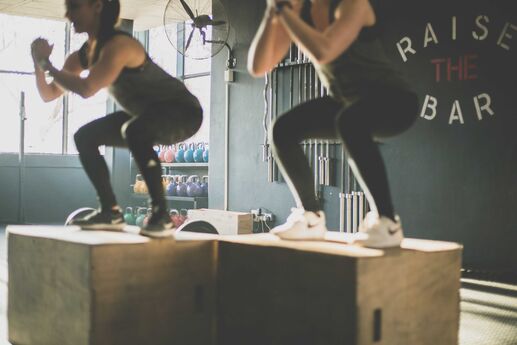How to Make First Pick at the Team Tryout
Going out for the varsity football team? The company dodgeball league? The New England Patriots? (OK, scratch that last one -- potential Patriots probably don’t need our advice.) Whatever your team tryout situation, there are six strategies every future hall of famer (or weekend warrior) can use to grab the coaches’ attention:
Be Pre-pumped
As they say, an ounce of muscle is worth a pound of fat (or something like that). Don’t wait until the week before tryouts to hit the gym. Remember this: While you’re lounging around the house nursing a bowl of Cocoa Puffs and watching “SpongeBob,” someone else who wants your position is already up and running, getting in shape.
Stand out From the Crowd
We’re not saying you should draw attention to yourself by, say, singing “Pants on the Ground.” (You probably won’t make the team based on that ability -- or lack thereof.) But doing certain little things -- like running all the way through the finish line, taking that second shot at a rebound, putting out that extra bit of effort during position drills and otherwise playing hard through the whistle -- gets coaches’ attention.
Be a Leader
Maybe you’ve been playing your sport since you were knee-high to a shortstop. But there will be other guys on the field who won’t even know which end zone to run to. Sure, you could just laugh at ’em. Or you could take them under your wing and help cut their learning curve. While you might not believe it (or want to admit it), there was a day when you stepped onto the field for the first time. Coaches respect leadership. Other players do too.
Be Coachable
No matter how good an athlete you may be or what level you’re playing at, there is a hierarchy in sports. Simply put, the coach is the general, you’re the private, and tryouts and preseason practices are boot camp. While working on “mundane” skills might be boring, good coaches put a lot of effort into drilling you with the fundamentals. Slam dunks may make headlines, but free throws win games. Don’t ignore a coach’s constructive criticism just because you want to be the brightest flash in the pan.
Have Skills
Some people are born with them; others have to work a lot harder to develop them. But nothing will get you a spot on the roster faster than having hands of glue, lightning-fast speed or “natural instinct” for your sport. And no matter how good you are, you can always get better. (See Training Strategies section below.)
Be Versatile
Ever since you were a kid, you dreamed about playing quarterback in the Super Bowl. But right now, the coach needs you for defensive end -- or maybe he just thinks your talents would be better suited to that position. Either way, be flexible -- a team player, as they say. Otherwise, maybe you’d be better off taking up an individual sport.
As we mentioned above in the Have Skills section, actually having abilities to perform well in a particular sport will take you far. Here are a few general talents you need and a quickie guide on how to get them:
- Grip: Most sports benefit from -- make that require -- a powerful grip (e.g., holding a racket, golf club or baseball bat; making a shoe string tackle; or putting the right spin on a bowling ball). Training via dead lifts, the “fat bar” or the “Farmers Walk” (an exercise requiring you to walk holding heavy dumbbells) can give you a handshake you can be proud of.
- Hips: In every sport, from Aussie-rules football to ultimate flying disc, your hips are your prime power source. Instead of doing set after set of abdominal crunches, focus on hip-dominant exercises such as squats, dead lifts, cleans (lifting a barbell from the floor to your shoulders) and lunges. Depending on your particular sport, variations of these exercises could emphasize different speeds, rep ranges, plane of motion, etc.
- Footwork: Sooner or later, most sports require you to get from point A to B. Nothing will get you the position of equipment manager faster than getting tripped up by your own two feet. Try jumping rope, doing ladder drills -- heck, even ballroom dancing -- to get your left foot to play along with your right.






